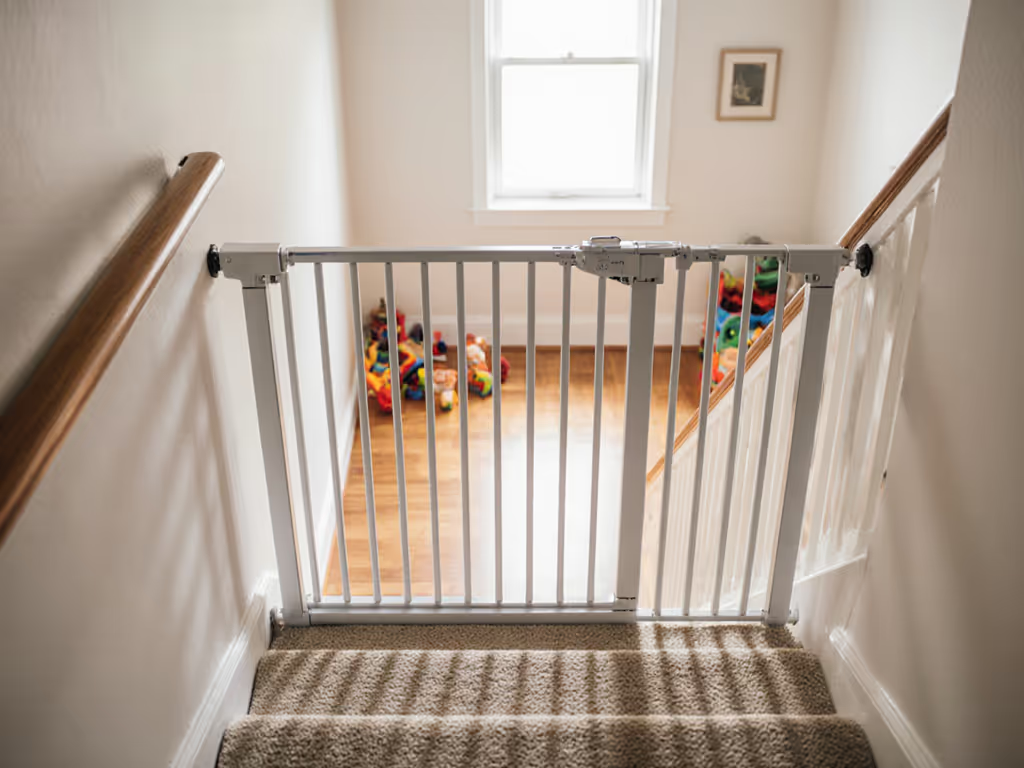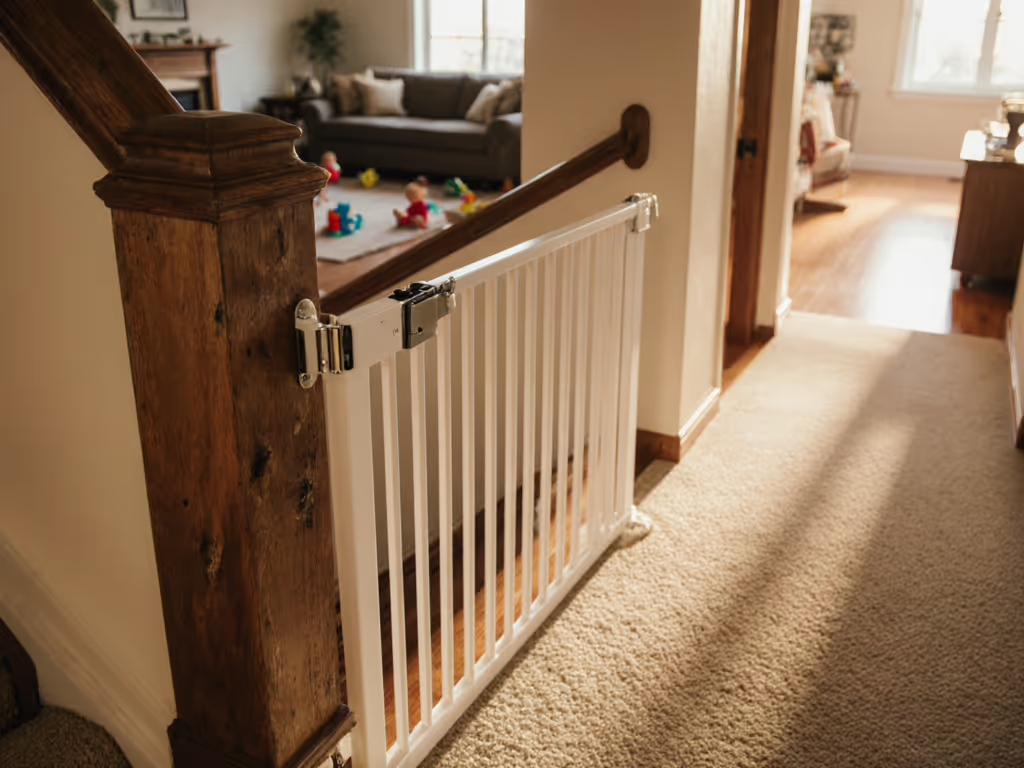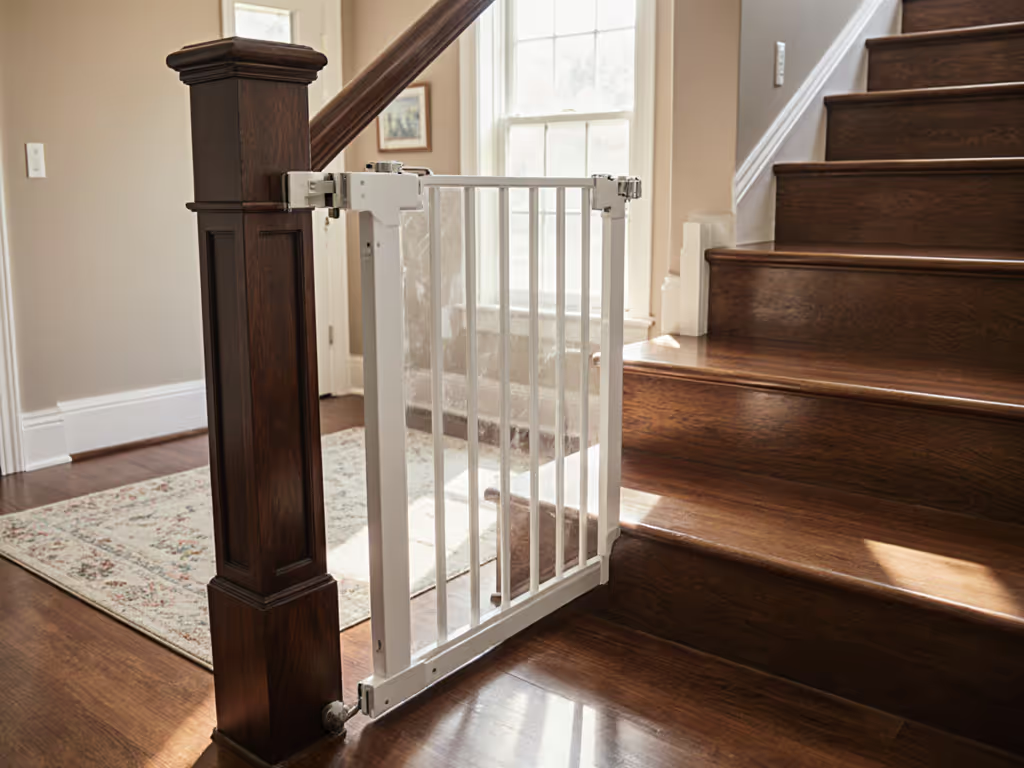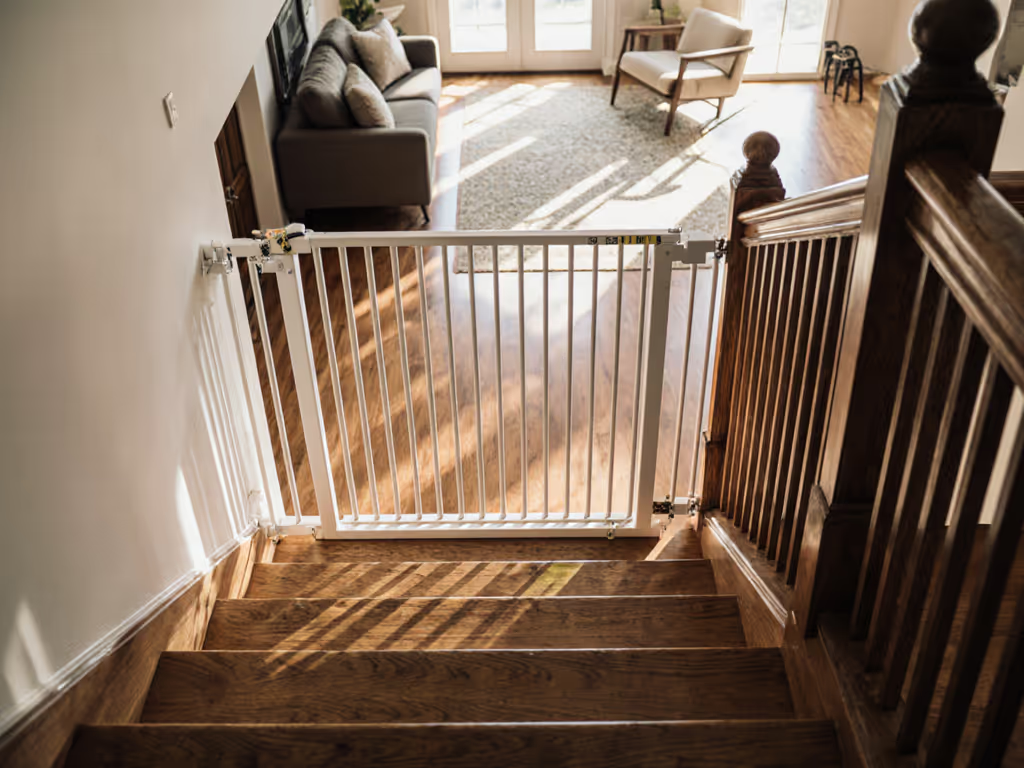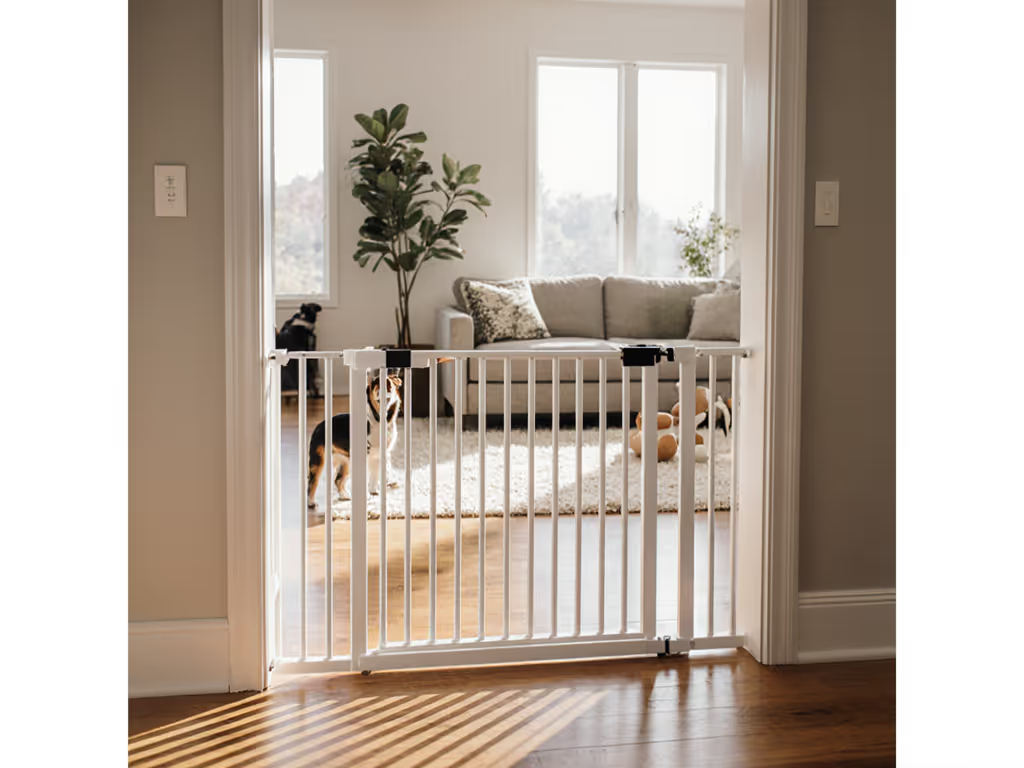
Decorative Safety Gates Explained: Design, Types, and Use
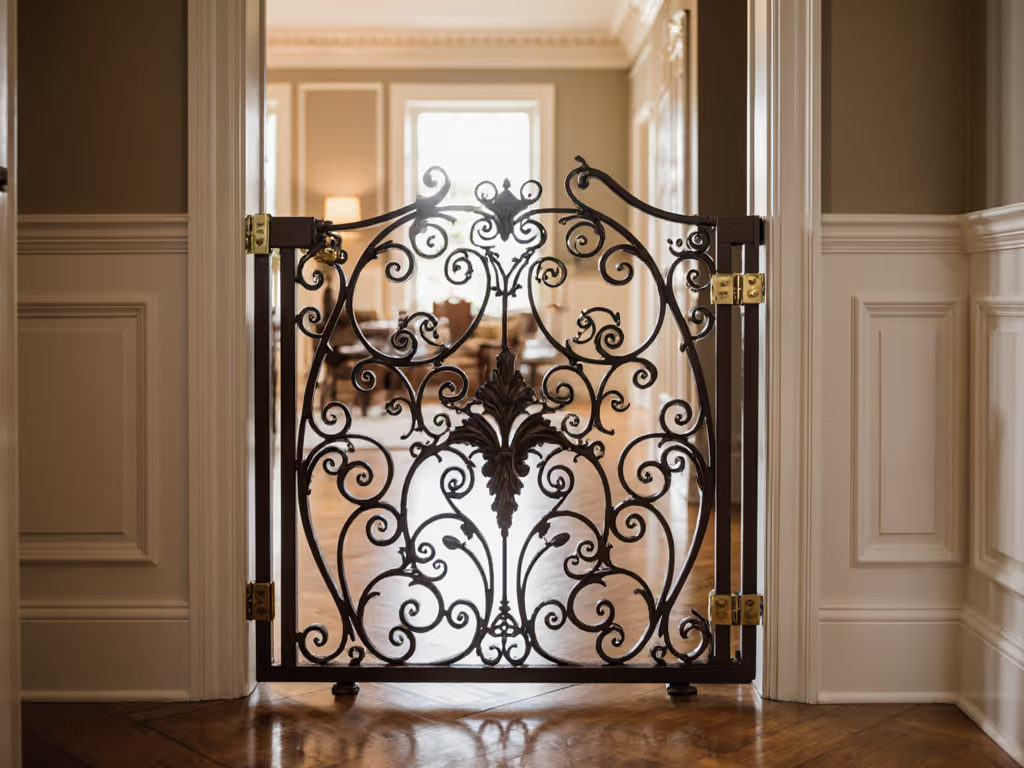
Over 75 percent of parents say they want safety products that look good in their homes. Decorative safety gates answer this demand by offering protection for children and pets without sacrificing style. Blending design and security, these modern barriers suit every room while keeping loved ones safe and complementing your home’s unique look.
Key Takeaways
| Point | Details |
|---|---|
| Aesthetic Integration | Decorative safety gates combine safety and style, enhancing home decor while providing functional protection for children and pets. |
| Installation Types | Choose between pressure-mounted and hardware-mounted gates based on your space's safety needs and aesthetic preferences. |
| Safety Standards | Ensure decorative gates meet rigorous safety specifications, including height requirements and child-resistant locking mechanisms. |
| Periodic Maintenance | Regularly inspect gates for wear and structural integrity, as ongoing maintenance is crucial for sustained safety and efficacy. |
What Are Decorative Safety Gates? Core Definition and Uses
Decorative safety gates represent a smart home solution that seamlessly blends protective functionality with aesthetic appeal. These innovative barriers are designed to keep children and pets safe while complementing your home's interior design, offering a visually pleasing alternative to traditional utilitarian child safety barriers.
At their core, these gates serve multiple purposes beyond simple child containment. Unlike basic baby gates, decorative safety gates are crafted with careful attention to design elements such as elegant wood finishes, artistic metalwork, or contemporary minimalist styles. They can be strategically placed in doorways, hallways, staircases, and room transitions to create secure zones while maintaining a sophisticated home environment. The primary functions include:
- Preventing children from accessing potentially dangerous areas
- Restricting pet movement in specific home zones
- Adding a stylish design element to interior spaces
- Providing flexible barrier solutions for different home layouts
Modern decorative safety gates are engineered with advanced mounting options like pressure-mount or hardware-mount mechanisms, allowing seamless installation across various architectural configurations. Whether you have wide doorways, narrow hallways, or unique architectural features, these gates can be customized to fit your specific home requirements while ensuring maximum safety and visual harmony.
Types of Decorative Safety Gates and Key Differences
Pressure-mounted and hardware-mounted safety gates represent the two primary installation categories that define most decorative gate options, each offering unique advantages for different home environments. Understanding these distinctions is crucial for selecting the right protective barrier that matches both your safety requirements and aesthetic preferences.
Here's a comparison of pressure-mounted and hardware-mounted decorative safety gates:
| Feature | Pressure-Mounted Gate | Hardware-Mounted Gate |
|---|---|---|
| Installation | Tool-free, quick setup | Requires drilling, anchors to studs |
| Wall Damage | None/minimal | Permanent holes in walls |
| Recommended Locations | Room dividers<br>Bottom of stairs | Top of stairs<br>High-risk areas |
| Stability | Good for low-impact use | Maximum, resists displacement |
| Removal | Easy, temporary | More challenging, semi-permanent |
| Aesthetic Availability | Wide range | Wide range |
| Safety Level | Moderate | Highest |
Pressure-mounted gates are versatile and easy to install, using adjustable tension mechanisms to grip doorways and hallway openings without requiring permanent hardware installation. Ideal for renters or homeowners who want minimal wall damage, these gates work best in low-risk areas like room dividers or bottom-of-stair locations. Their key characteristics include:
- Quick and tool-free installation
- Adjustable width ranges
- No drilling or wall damage
- Suitable for temporary barrier needs
By contrast, hardware-mounted gates provide superior stability and are recommended for high-risk areas like staircase tops where fall risks are significant. These gates require permanent mounting with screws directly into wall studs, ensuring maximum security and preventing potential gate displacement. Their installation demands more effort but offers unparalleled safety benefits, making them essential for homes with active toddlers or in spaces requiring robust protection.
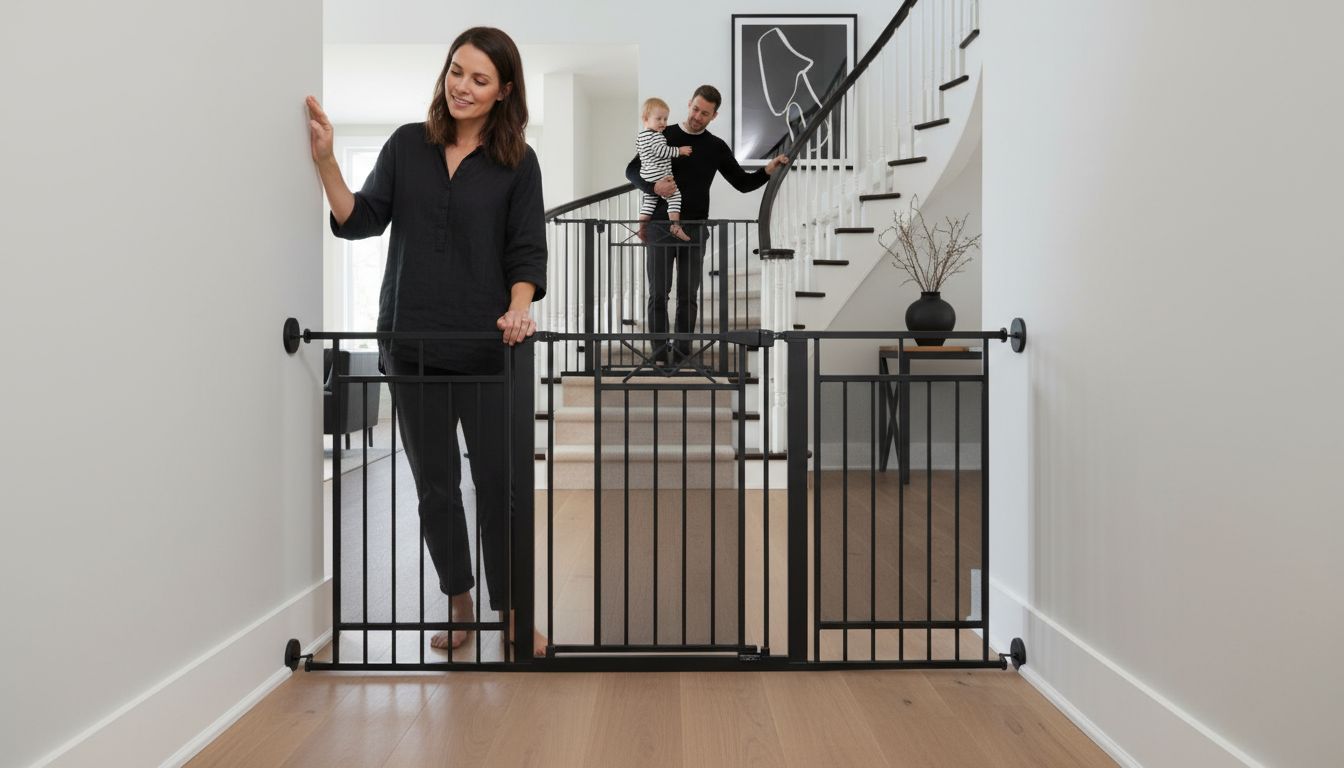
When selecting a decorative safety gate, consider factors beyond installation method. Look for gates that meet established safety standards, feature child-resistant locking mechanisms, and complement your home's design aesthetic. Some modern designs even incorporate materials like brushed metal, wooden panels, or mesh screens, transforming a functional safety item into a stylish home accessory.
Key Features and How Decorative Gates Work
Safety gate mechanisms are sophisticated design solutions engineered to provide robust protection while maintaining visual appeal. These innovative barriers work through precise engineering that combines functional stability with customizable installation methods designed to adapt to various home environments and architectural configurations.
The core functionality of decorative safety gates revolves around their specialized locking and mounting systems. Most gates feature dual-action latches that are simultaneously child-resistant and parent-friendly, allowing smooth one-handed operation while preventing unauthorized opening by young children. Key mechanical features include:
- Adjustable width mechanisms
- Dual-action locking systems
- Smooth-glide opening and closing
- Auto-close mechanisms
- Rounded edge designs for safety
Structurally, these gates prioritize critical safety specifications like precise vertical slat spacing (typically less than 3 inches) to prevent potential head entrapment and ensure child safety. The height standard of 22 inches or more provides an effective barrier that most toddlers cannot easily climb or bypass. Material selections range from durable metals with powder-coated finishes to elegant wooden designs and fine mesh constructions, allowing homeowners to select gates that seamlessly integrate with their interior design while maintaining rigorous safety standards.
Advanced decorative safety gates also incorporate innovative design elements like quick-release mounting brackets, tool-free installation options, and modular configurations that can adapt to unique architectural spaces. This means parents can find solutions that not only protect their children but also enhance their home's aesthetic, transforming a purely functional item into a design-conscious safety feature.
Safety Standards and Installation Requirements
Safety compliance is the cornerstone of decorative safety gates, transforming them from mere design elements into critical child protection systems. Professional safety standards mandate specific requirements that manufacturers must meet to ensure these gates provide reliable protection for children and pets across different home environments.
The installation process for decorative safety gates involves several crucial considerations that directly impact their effectiveness. Mounting integrity is paramount, with different installation methods requiring specific techniques:
- Hardware-mounted gates must be securely anchored into wall studs
- Pressure-mounted gates require precise tension adjustments
- Gates must maintain a minimum height of 22 inches
- Vertical slat spacing cannot exceed 3 inches
- Latch mechanisms must be child-resistant
Manufacturers are legally required to design gates that meet rigorous safety specifications addressing potential hazards like head entrapment, structural stability, and material toxicity. This means every gate must undergo extensive testing to ensure it can withstand impact, resist climbing attempts, and prevent accidental openings. Professional certifications and safety seals serve as critical indicators that a gate has passed these comprehensive safety assessments.
Beyond manufacturer standards, proper home installation is equally important. Homeowners should carefully measure doorway and staircase dimensions, ensure mounting surfaces are stable, and regularly inspect gates for wear, damage, or potential structural weaknesses. Remember that no safety gate is permanent - periodic checks and potential replacements are essential to maintaining a secure environment for children and pets.
Comparing Decorative Gates to Standard Options
Design aesthetics fundamentally distinguish decorative safety gates from their standard counterparts, transforming child safety barriers from purely functional items into sophisticated home design elements. While standard gates focus exclusively on protection, decorative gates seamlessly integrate safety features with interior design sensibilities, offering homeowners a more nuanced approach to childproofing.
The key differences between decorative and standard safety gates extend beyond visual appeal and touch multiple critical aspects of functionality and design. Standard gates typically feature:
- Basic utilitarian construction
- Minimal color options
- Simple metal or plastic materials
- Purely functional design
- Limited aesthetic considerations
By contrast, decorative safety gates elevate the childproofing concept by incorporating design-forward elements like premium wood finishes, intricate metalwork, contemporary minimalist profiles, and color-coordinated options that complement existing home decor. These gates are engineered to meet identical safety standards as traditional gates while providing homeowners the added benefit of visual harmony and design intentionality.
Beyond aesthetics, decorative gates often feature more advanced engineering, with smoother operating mechanisms, more refined locking systems, and greater adaptability to unique architectural spaces. They represent an investment in both child safety and home design, allowing parents to protect their children without compromising the sophisticated visual narrative of their living environment. The additional cost of decorative gates reflects their enhanced design complexity and material quality, making them a preferred choice for design-conscious families seeking both protection and style.
Secure Safety and Style Together with Expert Guidance
Choosing the right decorative safety gate means solving the challenge of protecting your children and pets without sacrificing your home's style. This article highlights the crucial balance between safety standards, installation methods, and aesthetic appeal. If you want a gate that offers top-tier security like hardware-mounted options while matching your interior design, understanding the difference between pressure-mounted and hardware-mounted gates is essential.
Don't settle for a safety gate that feels like an eyesore or weak security. At BabySafetyGates.world, we specialize in helping parents and homeowners find the perfect decorative safety gate tailored to their unique spaces and safety needs. Explore our comprehensive buying guides and expert reviews to discover gates that combine child-resistant locking, premium materials, and seamless installation. Take action now to protect your loved ones with confidence and style by visiting BabySafetyGates.world and making an informed choice today.
Frequently Asked Questions
What are decorative safety gates?
Decorative safety gates are barriers designed to enhance home safety for children and pets while also complementing interior design. They combine protective functionality with aesthetic appeal, featuring elegant finishes and modern styles.
What are the main types of decorative safety gates?
The two main types of decorative safety gates are pressure-mounted and hardware-mounted gates. Pressure-mounted gates are easy to install without tools and are suitable for low-risk areas, while hardware-mounted gates provide greater stability and are recommended for high-risk locations like the top of stairs.
How do I install a decorative safety gate?
Installation varies based on the type of gate. Pressure-mounted gates can be set up quickly without any tools, relying on tension adjustments. Hardware-mounted gates require drilling and must be securely anchored into wall studs to ensure safety.
What safety standards should I look for in decorative safety gates?
When choosing decorative safety gates, look for compliance with safety standards that include height minimums (typically 22 inches), slat spacing of no more than 3 inches, and child-resistant locking mechanisms. Ensure the gate meets rigorous testing for structural stability and safety hazards.

